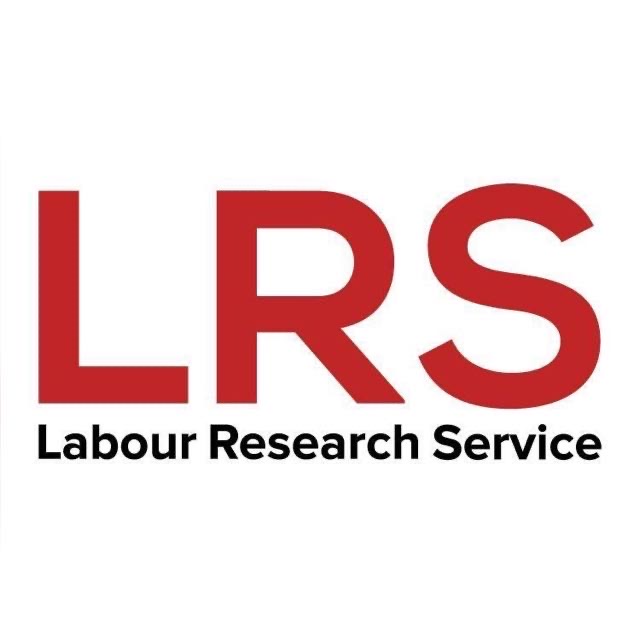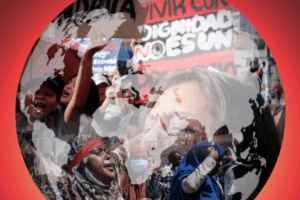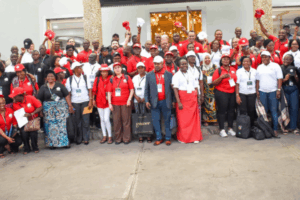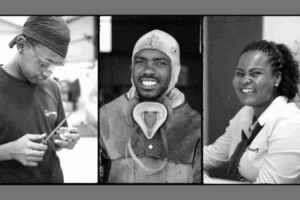Trade unions have a responsibility to protect and advance the right to equality of all members. Collective bargaining can act as an important tool for securing equality and justice in the workplace. It is critical that trade union negotiators have the tools to ensure that workers are protected and do not experience oppression and discrimination based on their sexual orientation and gender identity.
Trade unions can protect and advance the right to equality for workers who are LGBT by:
- Creating awareness and understanding of the challenges workers face
- Addressing instances of transphobia in the workplace
- Having a full understanding of the legislation setting out the minimum standards for protecting workers from homophobia and transphobia
- Employing collective bargaining strategies to protect workers from homophobia and transphobia
This article includes:
- An explanation of key terms that form part of the equality vocabulary
- A description of the key challenges facing the LGBT community
- A discussion of the specific challenges transgender workers face
- An overview of the relevant legislation protecting workers from discrimination
- Suggestions of how trade unions can support and protect LGBT members
- Examples of how collective agreements can play a role in addressing sexual orientation and gender identity discrimination
1. Key terms you need to know
Sexual orientation
Everyone has a sexual orientation – some are attracted to the opposite sex, some are attracted to the same sex or to both sexes. This is a natural and normal part of who we are as individuals.
The term ‘sexual orientation’ refers to physical, emotional and romantic attraction, rather than to specific sexual practices.
LGBT
LGBT is an acronym used as a collective term for all persons who are lesbian, gay bisexual and transgender.
LGBTIQA+ is an evolving acronym that stands for lesbian, gay, bisexual, transgender, intersex, queer/questioning, asexual and new terms that could be added.
Some common words associated with sexual orientation:
Homosexual: a person who is emotionally and sexually attracted to people of the same sex. Heterosexual: a person who is emotionally and sexually attracted to people of the opposite sex. Bisexual: a person who is emotionally and sexually attracted to both sexes. Lesbian: a woman who is emotionally and sexually attracted to other women. Gay: a man who is emotionally and sexually attracted to other men.Gender identity
Gender is about the behaviours, roles and activities that society considers appropriate for men and women. It can also be described as the qualities associated with being masculine or feminine.
Gender identity is separate from both sex and sexual orientation. Your gender identity is your individual inner sense of being male or female – or both, or neither.
Your gender is what society expects you to be, for example, you are expected to behave like a man or a woman.
Your gender identity is what you choose to be in terms of your clothing, behaviour and appearance. This might not ‘match’ what society expects from you in terms of your gender.
Homophobia:
The fear or hatred of those assumed to be lesbian, gay or bisexual, and of anything connected to these persons and their communities.
Transphobia:
The fear or hatred of those seen to transgress or blur social expectations of gender and of anything connected to these persons and their communities.
Homophobia and transphobia can be experienced in many ways, from negative attitudes and beliefs to harassment, intimidation and physical or sexual violence. Homophobia and transphobia can occur at a personal, institutional or societal level. Like all forms of discrimination, homophobia and transphobia are damaging not just to individuals, but also to society as a whole.
2. Creating workplaces free from homophobia – identifying the challenges workers face
“One time I went for a hearing, and the bosses said it was ‘just a performance review’. I told them straight up that I am not a fool. I knew they were building up a case to get rid of me. Sexuality is a big deal in the workplace.” – Dumelang (Focus group interviews, Pride at Work – a study on discrimination at work on the basis of sexual orientation and gender identity in South Africa)
Many workers are treated unfairly by employers and co-workers because of their sexual orientation. Sometimes the discrimination is obvious, sometimes it is more subtle – either type can be damaging.
To free workplaces from homophobia, we first have to identify and understand the challenges that lesbian, gay, bisexual and transgender workers face. Challenges can be categorised into three main forms of discrimination:
Workplace rights are denied
- Refused a job because of one’s sexual orientation or gender identity
- Passed over for promotion because of one’s sexual orientation or gender identity
- Differential treatment, either in terms of task allocation or acknowledgement of successes
- Difficulty accessing health and other benefits related to same-sex partners
- Having no recourse to raise complaints and grievances in relation to experiences of discrimination
- Getting dismissed on false charges.
Intimidation in the workplace
- Forced to reveal one’s sexual orientation or gender identity
- Forced to hide one’s sexual orientation or gender identity out of fear
- Questioned repeatedly about one’s sexual orientation or gender identity.
Harassment and violence in the workplace
- Harassment can take the form of unwanted communication, attention or contact. Examples include name-calling, repetitive requests for dates, homophobic jokes or being ridiculed and mocked in front of colleagues;
- Verbal abuse and hate speech;
- Threats of, or actual physical violence, for instance, being beaten up or assaulted;
- Sexual violence, including rape.
3. Protecting workers from transphobia – identifying the challenges
Transgender people have a gender identity or gender expression that differs from the sex that they were assigned at birth. Some transgender people undergo a gender transition from one sex to another.
There might be workers who have undergone a gender transition. A gender transition refers to the process of changing one’s physical body to align it with one’s gender identity. This is a complicated, multi-step process that can take years. A transition can take different forms – some people may choose to take hormones only, while others may undergo various forms of surgery.
Transgender workers often experience the workplace as unwelcoming and threatening, and there are a number of challenges trade union negotiators need to be aware of when preparing to bargain on their behalf.
There might be limited knowledge among colleagues and employers regarding gender transitioning, and, as a result, there might not be protocols in place, for example, to facilitate a name change (for instance, ensuring names are changed on all workplace records, including payroll, etc).
Other issues that need to be raised at the bargaining table may include:

4. Legislation setting out the minimum standards for protecting workers from homophobia and transphobia
The Labour Relations Act (1995), the Basic Conditions of Employment Act (1997) and the Employment Equity Act (1998) outline the rights and responsibilities available to all workers, including some protections relating to sexual orientation. For example, Section 187(1)(f) of the Labour Relations Act prohibits dismissal on the grounds of sexual orientation. Section 6 of the Employment Equity Act also prohibits discrimination on the basis of sexual orientation. It also stipulates that the courts can hold employers liable, under certain circumstances, for acts of discrimination by any of their employees while at work.
The Medical Schemes Act (1998) prohibits discrimination against an employee on the basis of sexual orientation. The Act also recognises same-sex dependents as legal beneficiaries.
The 1999 Code of Good Practice on Employment Equity advises workplaces to set up assessment structures to review policies, practices, procedures and work environments, and to create a workplace profile that identifies places of discrimination. The workplace is then advised to conduct and execute a plan to change any identified places of discrimination and to have this process monitored for effectiveness.
The 1998 Code of Good Practice on Handling Sexual Harassment Cases declares that all unwanted communication and/or physical contact of a sexual nature is defined as harassment. It states that employers have a responsibility to eliminate any environments that perpetuate these kinds of behaviours, to have clear policies in place regarding sexual harassment and to create systems and procedures for reporting, investigating and responding to such cases. This code is written using gender-neutral terms, with no specific mention of women or LGBT persons.
The draft Code of Good Practice on the Elimination of Violence and Harassment in the World of Work, (20 August 2020) states, “Anyone can be victim of such Violence and Harassment, including those who do not conform to gender norms or traditional societal expectations based on gender, for example, LGBTIQA+ persons.”
The Code of Good Practice is intended to address the prevention, elimination and management of Violence and Harassment that pervades the world of work. The Code is guided by the ILO Convention 190 and its Recommendation on eliminating and preventing Violence and Harassment in the World of Work, 2019; the Discrimination (Employment and Occupation) Convention 111 of 1958 (Convention 111) and The ILO Convention 151, relating to Occupational Health and Safety.
5. Rising above the minimum of the law – a collective bargaining strategy to protect workers from homophobia and transphobia
Preparation in the workplace
Preparation is a key to successful negotiations, and as a negotiator, you are required to gather the information that will help you understand the members you represent and assist you in representing your collective interests.
It is important to establish baseline information on how the workplace aligns with the laws protecting workers from discrimination.
There are a number of questions that could be asked to establish a baseline:
- Do workers who identify as lesbian, gay, bisexual or transgender have equal entitlement to all workplace benefits like pensions, family responsibility leave, parental leave, study and housing benefits?
- Do workers who identify as lesbian, gay, bisexual or transgender have equal entitlement to all workplace benefits like pensions, family responsibility leave, parental leave, study and housing benefits?
- Is there evidence that recruiting and hiring policies and practices do not discriminate against workers regardless of sexual orientation and gender identity?
- Do employee assistance programmes provide services and counselling that take into account sexual orientation and gender identity?
- Is mandatory sensitisation training in place for managers and co-workers?
- Do workers have toilets and ablution facilities that correspond to their gender identity?
- Is the language in the workplace gender-neutral or gender and trans inclusive?
- Do transgender and gender non-conforming workers have the right to comply with company dress codes in a manner consistent with their gender identity or gender expression?
- Do workers have the right to be addressed by the name and pronoun that corresponds to their gender identity?
- Do workers have the right of confidentiality?
Preparation inside the trade union could include:
- Opportunities to discuss the nature and impact of sexual orientation and gender identity discrimination in the workplace;
- Union education strategies aimed at combating homophobia and transphobia;
- A union anti-discrimination policy that specifically refers to sexual orientation and gender identity;
- An anti-harassment policy that specifically refers to sexual orientation and gender identity.
- An extension of union benefits to include same-sex partners and the families of same-sex couples;
- The use of inclusive language in all communications – for instance, use ‘partners’ instead of ‘wives’ or ‘husbands’;
- Sensitisation training for union staff and members, with a higher level of training offered to shop stewards and others handling grievances;
- Increase the visibility of workers who openly identify for example as lesbian or gay, for instance, by including human interest stories in newsletters;
- Support workers to openly live out their gender identity. For example, if a lesbian takes on a leadership position, she could be supported to share her sexual orientation.
Examples of how collective agreements can play a role in addressing sexual orientation and gender identity discrimination
- The private-sector bargaining council agreement signed at the Motor Industry Bargaining Council in South Africa uses the BCEA as a guide and explicitly includes “life partner” in its provision for family responsibility leave.
- In South Africa, the Government Bargaining Council agreement signed at the Public Service Coordinating Bargaining Council lists both spouses and life partners when referring to family responsibility leave.
- A collective agreement signed by the National Union of Public and General Employees (NUPGE) in Canada includes health benefits for the employees’ same or opposite-sex spouses.
Using an intersectional analysis to promote inclusion in the World of Work







